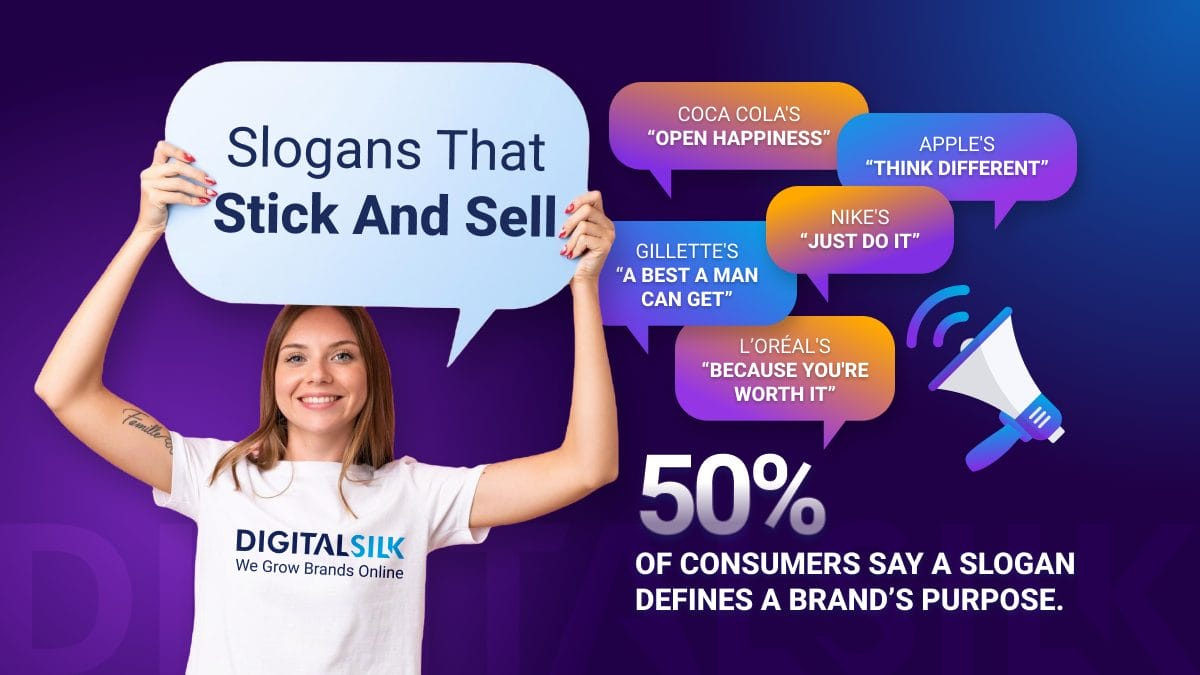Apple, Amazon, Microsoft and Google are once again among the most valuable brands of 2024.
Nothing surprising there, but how does a brand earn this spot?
While there are many factors, a successful brand strategy is an important starting point..
Whether you’re branding your business from the ground up, or you’re embarking on a rebranding journey, we’re here to explain all you need to know about the different types of branding strategies.
We’ll share successful branding examples from well-known brands, plus factors to consider when choosing a strategy for your brand.
Digital Silk develops authentic brands. Request a Quote
What Is A Branding Strategy?
A branding strategy is an action plan that details how a company will present their brand to consumers, from communicating their mission, vision, values and unique value proposition to shaping consumer perception, improving brand recognition and more.
While there are many different types of brand strategies, every type includes nine key elements — more on that below!
Brand vs. Brand Identity vs. Branding
First, let’s get some terminology out of the way. Brand, brand identity and branding — you’ve heard them all, but what’s the difference?
What is a brand?
A brand is a concept in business and marketing that helps consumers recognize a specific company, product or service and distinguish them from their competitors.
What is brand identity?
A brand identity is the combination of messaging and visual elements designed to help consumers identify a company, product or service. Visual elements include color palette, typography, graphics and logo, while messaging includes voice and tone.
What is branding?
Branding is the process of combining a brand’s visual elements with their tone, voice and other key elements to build a unique identity and shape consumer perception.
How Does Branding Strategy Drive Growth?
A well-executed branding strategy can help your company stand out, increase brand loyalty and drive business growth. Here’s a case study on how Digital Silk helped HP increase brand loyalty by 56%.
Year after year, studies by Nielsen and PewResearch continue to reveal astounding numbers, highlighting the significant impact of branding on customer growth.
If you’re interested in learning more about some of these findings, and how they affect customer acquisition and retention, we invite you to take our quiz and find out!
#1. By what extent can consistent branding boost top revenue?
Multiple research studies confirm that maintaining consistent branding across all channels can lead to a significant revenue increase – up to 33%
#2. How many US consumers switch brands after one poor interaction?
For 33% of US consumers, one instance of poor service leads to brand switching.
#3. What is the effect of color on brand recognition?
Using a signature color can increase brand recognition by 80%
Results
Congratulations! You’ve passed the test!
Your knowledge and insights into key aspects of brand strategy are impressive!
Low Score but Great effort!
Keep exploring branding strategy with Digital Trends to fully understand its significance.
Key Elements Of A Branding Strategy
While there are many different types of branding strategies in marketing, they all share key elements that serve as the foundation for the strategy. These elements include:
- Brand purpose: The reason the company is in business and what the brand is trying to achieve
- Brand vision: The ideas and goals behind the brand, which serve as inspiration for growth
- Brand values: The company’s beliefs and what they stand for
- Target audience: The demographic(s) that the brand is aiming to reach
- Market analysis: An analysis of the marketplace that identifies gaps where the brand has an opportunity to position itself, based on its unique value proposition
- Awareness goals: The initiatives the brand will take in order to reach their target market
- Brand personality: The human-like attributes of the brand that will help it build relationships with consumers
- Brand voice: The language and tone the brand uses to communicate with consumers
- Brand tagline: A memorable slogan that sums up the brand and their offering in a few words
12 Types Of Branding Strategies
From product and service branding to corporate branding, cultural branding and beyond, here are the 12 most common types of branding strategies in marketing.
1. Product Branding Strategy
Product branding is a type of branding strategy that aims to create a recognizable brand for a specific product, with the goal of reaching the company’s target market.
Any company or organization can leverage a product branding strategy to market specific products and grow their recognition.
One famous example of product branding is Apple. The globally recognized brand uses product branding around the iPhone, which generates 49% of the company’s revenue.
Another well-known example? A little company you may have heard about, called Coca-Cola.
Check out the brand’s campaigns below to see how they use product branding to market their famous soda. You can almost taste the fizz!
2. Service Branding Strategy
Service branding is a type of branding strategy used by companies that offer services, rather than products. The goal of the strategy is to emphasize the benefit that the service provides for consumers.
A variety of industries and businesses use service branding, including:
- Banks
- Insurance companies
- Airlines
- Law firms
- Consulting companies
Auto insurance company Geico uses service branding to emphasize their brand promise of “15 minutes or less can save you 15% or more on car insurance.”
The company’s gecko mascot has captured hearts and provoked laughter around the country since the brand introduced him in 1999.
At that time, the lighthearted and comical approach was unusual for the auto insurance industry, allowing Geico to stand out significantly among the competition.
The humorous service branding ad was met with positive consumer feedback, and the gecko has been a staple ever since.
Another example of a perfectly executed service branding strategy?
Enter Chick-fil-A, the most “polite” fast food chain in America.
While one of their most popular menu items is titled “the original chicken sandwich,” Chick-fil-A offers something even better: Exceptional customer service known across the nation.
According to Chick-fil-A founder Truett Cathy, the brand is about more than fast food items. He explained:
“We should be about more than just selling chicken. We should be a part of our customers’ lives and the communities in which we serve.”
With employees greeting you with their trademark along the lines of, “How may I serve you today?” and leaving you with an enthusiastic “My pleasure!” it’s hard not to leave with a smile, each and every time.
3. Corporate Branding Strategy
Corporate branding is a type of branding strategy focused on creating a persona for a company as a whole, instead of marketing the brand in separate identities.
It defines how the company presents itself to consumers and even employees.
From the charities the brand supports to the organizations they partner with, their stance on current events and more, organizations use corporate branding to shape their image for consumers, shareholders and employees alike.
While we mentioned that tech giant Apple utilizes a product branding strategy for the famous iPhone, the brand as a whole also uses corporate branding to showcase their values and connect with consumers on an emotional level.
Take a look at a recent campaign below, which highlights accessibility features for those who are unable to use their voice. The advert shows Apple’s consideration for the needs of consumers across all spectrums and abilities, and promotes a more human side of the brand.
The campaign has accumulated over 18 million views as of 2024.
4. Retail Branding Strategy
Retail branding is a type of branding strategy utilized by retailers that aim to shape consumer perception, typically through physical elements like signage, décor, music, displays, flooring and light fixtures.
For brands that have both physical and digital storefronts, retail branding within eCommerce requires consistency in terms of branding elements, to ensure that the brick-and-mortar experience is as identical as possible to the digital one.
Retail branding is used by:
- Department stores
- Supermarkets
- Specialty stores
- Warehouses
- Discount stores
Ranking second among the world’s largest retailers, Walmart is a prime example of retail branding at work. The company upped the ante by launching a store redesign in 2021.
Following the launch, eCommerce sales climbed from $43 billion to $53.4 billion. That’s a 24% jump in just two years, with 2024 set to represent a further increase.
The redesign centered on navigation, to help customers quickly find what they were looking for.
The second phase of the redesign, which started in 2022, included elevating the customer experience through dynamic displays, new lighting, digital screens and more.
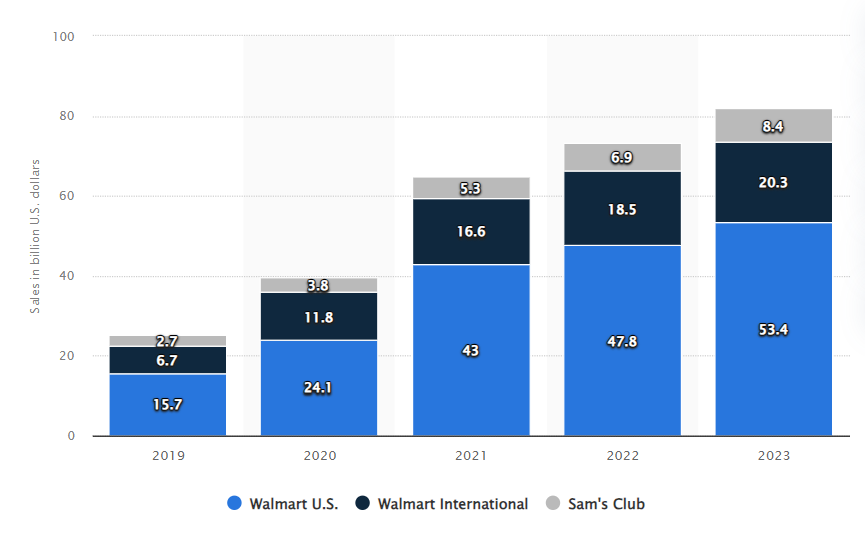
[Source: Statista]
5. Geographic Branding Strategy
Geographic branding is a type of branding strategy that highlights a certain area where a product or service is exclusively available.
Businesses that typically use geographic branding include:
- Local businesses
- Cities or countries
- Hotels
- Tourist attractions
McDonald’s uses geographic branding across its 40,275 global locations, with each campaign informed by the cultural background and eating habits in the respective country or region.
While in the U.S. the fast-food chain offers the popular Big Mac and Quarter Pounder®, the menu in Japan includes the Samurai Mac, Sakura Teritama Burger and other region-specific deals.
In addition, the portions in Japan are smaller.
How has this geographic approach worked for the golden arches?
McDonald’s Japan is one of the top fast-food chains in the country, with net sales in 2022 reaching 352.3 billion Japanese Yen, or almost $2.5 billion.
6. Cultural Branding Strategy
Cultural branding is a type of branding strategy that aims to establish an emotional connection with a culture, lifestyle or target group.
Businesses that typically use cultural branding include:
- Tourism companies
- B2B innovators
- Various types of businesses that aim to build brand equity through emotional storytelling
An example of cultural branding is Harley Davidson.
From the early logos containing an eagle with widespread wings to the various slogan modifications, “Live to ride, ride to live,” and “Screw it, let’s ride,” Harley Davidson has embodied a lifestyle of freedom, heritage, passion and strength, or the very American dream — offering a deep and direct connection to their target consumer.
Although the brand has shifted over the years to welcome a more diverse audience (women, for example!), Harley Davidson’s vision remains unchanged: to sell a lifestyle experience to consumers who hold the same values near and dear.
7. Personal Branding Strategy
Personal branding is a type of branding strategy that focuses on marketing yourself as a person, based on your capabilities or unique talent or perspective.
Personal branding is popular among:
- Professionals, such as lawyers, doctors or freelancers
- Celebrities
- Politicians
- Thought leaders
- Influencers
The example that immediately comes to mind in terms of personal branding is Elon Musk.
When you hear his name, the words “Tesla” and “Twitter” (now “X”) likely come to mind. But Elon Musk has built another brand that is all his own, and it revolves simply around his name.
Beyond starting Tesla, the next generation of cars, Musk’s unique and often controversial outlook has led to a cult-like following while also provoking heavily debated opinions that are never far from the limelight.
Elon Musk is known for his insatiable work ethic (often working more than 100 hours a week), along with his perseverance and his commitment to his vision, despite facing repeated failures.
Plus, he’s active on social media (particularly the platform he owns) and consistently engages his followers – so you bet he’s someone you can relate to.
Former school teacher turned entrepreneur, Melyssa Griffin, is another example of personal branding.
Using friendly and insightful blog posts within her content marketing strategy, she provides expert advice about how to grow your business through reprogramming internal beliefs.
Melyssa started with a blog and in three years, she managed to turn her hobby into a multimillion-dollar company. She has mentored over 20,000 people in online courses and mastermind classes.
Part of her personal branding is her conversational tone, which welcomes consumers and presents her as trustworthy, helpful and knowledgeable.

8. Co-Branding Strategy
Co-branding is a type of branding strategy that combined the synergy between two or more popular brands to offer a new original product or service that brings value to consumers.
The new product or service could be a combination of both brands, or it could have an entirely new brand identity.
The goal of a co-branding strategy, highlighted in the YouTube video below, is typically to enhance brand awareness or reach new target groups.
An example of co-branding is the strategic partnership between Uber and Spotify in 2015, known as “a soundtrack for your ride.”
The co-branding strategy, which was initially introduced in 10 locations around the world, including Sydney, London, and Singapore, allowed Uber customers to select and play their own Spotify playlists while riding in an Uber.
The initiative, which targeted audiences between the ages of 16 and 25, generated a ton of media attention and helped boost Spotify’s monthly active user base from 68 million in the first quarter of 2015 to 96 million in the first quarter of 2016.
9. Activist Branding
Activist branding, also known as conscious branding, is a type of branding strategy in which a company aims to brand their business based on their values.
Companies that seek to improve their brand sentiment, engagement and loyalty, typically among Gen Z and Millennial audiences, tend to incorporate their support for various environmental, social, community or economic causes into their branding strategy.
A well-known example? Sports retail giant Nike.
In the brand’s 2020 socially conscious campaign, “Let’s all be part of the change,” the company turned their iconic “Just do it” slogan into a “For once, don’t do it” anti-racism message.
Within three days after the ad was released on Twitter, it had 6.7 million views, 100,000 retweets and 210,000 likes. It also garnered 14 million views on Instagram.
10. Ingredient Branding
Ingredient branding is a type of branding strategy that focuses on a definitive quality of a product that differentiates the product from its competitors.
One of the most popular ingredient branding examples is DuPont’s brand Teflon. In this case, the parent company used the name of the non-sticky chemical compound to create a brand all on its own.
Today, Teflon is a multi-billion-dollar brand, and the famous product is used in various industries, including automotive, industrial manufacturing, electronics, cabling and more.
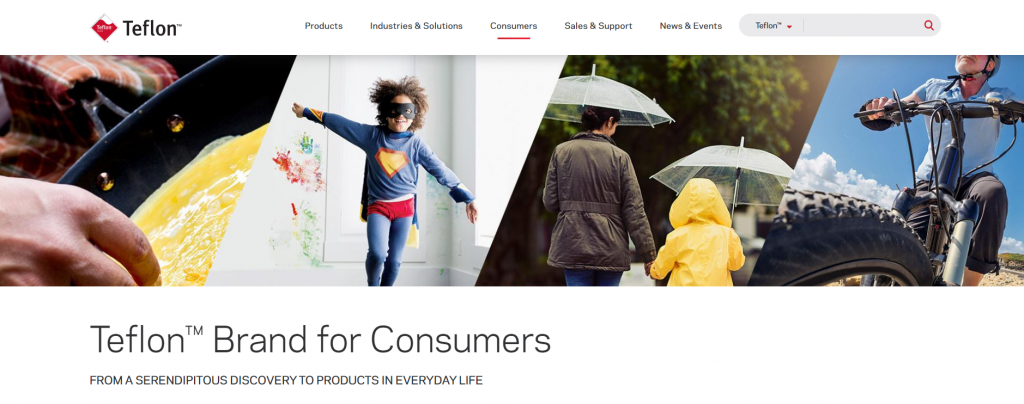
11. Online Branding Strategy
Online branding, also known as internet branding, is a branding strategy that uses online content, such as a website, blog, social media channels or ads to express a company’s personality, showcase its offering and strengthen its digital positioning.
Starbucks uses online branding to ensure a consistent and visible digital presence across channels, utilizing user-generated content to help consumers feel like they’re part of the brand.
With 35 million followers on Facebook, 18 million Instagram followers and 11 million Twitter followers, Starbucks is seemingly doing something right when it comes to online branding.
12. Offline Branding Strategy
Offline branding is a type of branding strategy that aims to present a company’s mission, values or offering through physical interactions, such as trade shows and event booths, business lunches, vehicle wraps, billboards or print ads.
Though measuring offline branding performance is more difficult than measuring digital KPIs, an example is the 2022 Adidas billboard in Dubai that depicted Argentina’s team winning the FIFA world championship.
Featuring a brilliant victory moment, Adidas combined the ad with its slogan “Impossible is nothing.”
Which Type Of Branding Strategy Is Right For You?
There’s no one-size-fit of all branding strategy for a single industry. While personal branding might work best for a local attorney with one location, for example, corporate branding might be a better fit for a large-scale law firm with 100 locations around the country.
When choosing a strategy for your brand, consider:
- Your brand’s objectives: Define what you want to achieve, whether it’s raising awareness about your social responsibility, highlighting a special ingredient in your product or connecting with consumers based on shared cultural values.
- Your target audience: Who are you aiming to reach through your brand? Build user personas for each target group to determine their demographics, likes, dislikes, interests and other details. Based on this information, you can determine the tactics that will be most effective in reaching and engaging with them.
- Your brand identity: What strategy most aligns with your brand identity, and provides you with the best opportunity to present your identity to consumers?
- Your industry: Research your competitive landscape to see which strategies are working for your competitors, and determine how you can outperform them.
How To Use A Brand Strategy To Grow Your Brand
A cohesive brand strategy provides your business with message clarity, visual consistency and a well-defined, unique brand voice.
With this, your brand can successfully:
- Craft messaging for leads and prospects across the conversion funnel
- Communicate and present your business’ unique selling points to clients
- Onboard partner agencies and other service providers
- Onboard new employees, especially in the business development and marketing departments
- Create messaging and visuals for audiences on various digital channels, following brand guidelines
Let’s look at how to employ each of the points above in greater detail:
1. How To Use A Brand Strategy To Communicate With Leads
Leads are more likely to trust a company in the future and become loyal customers if they know what to expect from the brand.
The process of lead onboarding begins from the first contact with the customer and continues until they are able to make an informed decision about your brand and its products or services.
This may consist of detailed step-by-step instructions, tutorials, guidance and support with the aim of helping leads understand how your brand solves their pain points.
Brand strategies for communicating with leads should consist of these steps:
- Educate your sales team on your brand values, including your mission and vision, brand positioning and messaging they can communicate to your leads through all available lead-capturing channels
- Ensure that external and lead-facing representatives understand and represent your brand identity
- “Train” your website chatbots to be consistent with your brand voice
Wondering how to train chatbots to use a consistent brand voice?
Check out these examples:
- Spotify: This streaming service’s Facebook Messenger bot uses a casual and friendly tone of voice to help users share music and recommend playlists based on their mood or general preferences.
- Sephora: This beauty brand’s personal assistant chatbot compliments the brand’s in-store services by using an affirming and supportive tone of voice to suggest makeup tutorials and products.
- Pizza Hut: Making it easy to order pizzas for delivery via Facebook Messenger or Twitter, this chatbot uses a conversational tone in line with the brand’s voice to provide users with current deals and ask questions about their order.
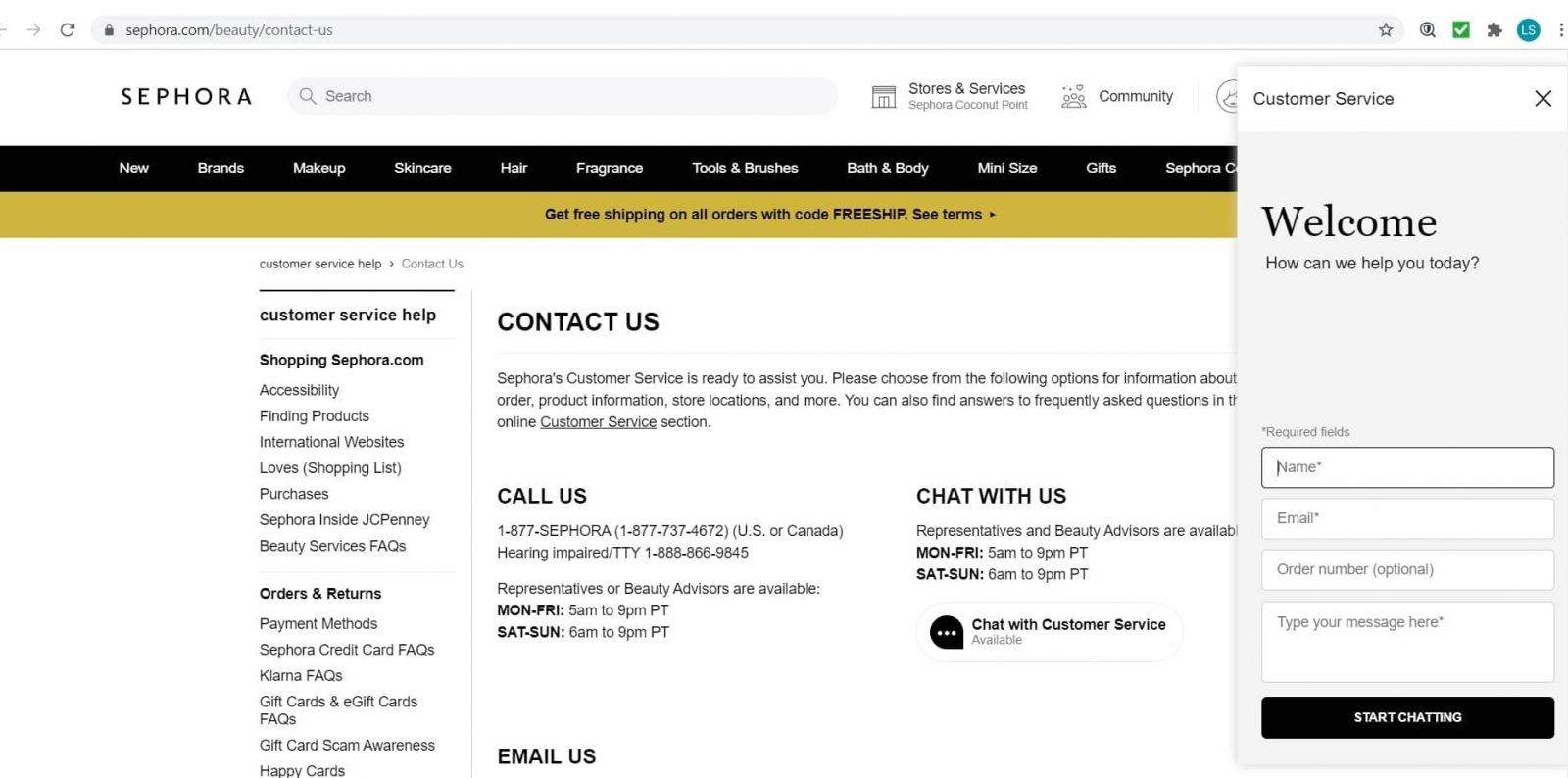
2. How To Use A Brand Strategy To Onboard Clients
Brand strategy and storytelling provide consistency in brand messaging.
People love consistency and are comfortable when working within a predictable environment.
When used correctly, a brand strategy is a tool that helps you create this environment and increase client trust in your brand.
In order to make sure your clients are on board with your brand mission, values and general capacities to deliver outstanding work:
- Use messaging consistent with your brand strategy: Messaging in your client presentation should not differ from what your prospects and clients can find on your website, as a discrepancy can cause confusion and suspicion
- Create branded promotional materials: On-brand materials like presentations and e-documents help to increase credibility and elevate the authority of your pitch.
- Leverage brand values: Honing in on well-researched brand values that you share with your audience will build an emotional connection
3. How To Use A Brand Strategy To Onboard Agencies & Other Service Providers
Brand strategies serve as a set of strict guidelines that align marketing efforts among all stakeholders, including specialized agency partners.
A streamlined brand voice and consistent messaging help provide a character that your stakeholders, as well as your business partners such as agencies, can relate to.
By establishing core values and building a brand identity around them, your business gains a basis for those values to shine in short-term and long-term partnerships.
Your brand’s personality, language and imagery will play a key role in allowing your agency partner to trust your ability to provide satisfactory deliverables that will improve your business performance.
To ensure this happens, the first steps to take are to:
- Schedule a dedicated kickoff call with every new service provider to guide them through your brand strategy
- Send them a copy of your brand strategy
- Monitor their output (Ex. social media calendar, PPC ads, website messaging, etc.) against your brand strategy to ensure all pieces of the puzzle move in the same direction
4. How To Use A Brand Strategy To Onboard Employees
Cohesive and well-defined company culture and business purpose help retain employees.
A brand strategy that creates such a working environment is also effective at onboarding new hires and helping them adapt to their roles. A brand strategy explains what the company stands for and provides guidelines for how the employees should represent the brand.
Employees are often the best brand ambassadors for:
- Creating brand buzz and brand awareness
- Driving company culture
- Recruiting new talent
- Forming a public perception of your brand
To ensure your brand strategy results in a cohesive team that understands and applies the company values and mission to their work, be sure to do the following:
- In addition to training your sales team, present an employee version of your brand strategy and make it accessible to your entire workforce
- In this internal brand strategy presentation, outline your company’s:
- Brand and company values: Why does your brand exist?
- Brand vision and mission statement: What is your brand here to do? Where does your company see itself in the context of a market and what does its future look like?
- Brand culture that includes
- Brand descriptive adjectives: What buzzwords and phrases describe what your brand is and what it isn’t?
- Sales and customer relations etiquette: What are the best practices for professional communication?
- Resources and tools of the trade: What resources can your employees use in their day-to-day operations?
Be sure to incorporate your brand presentation into your employee onboarding process. This will help you create a uniform company culture and infuse your internal and external relationships with a consistency that Forbes’ research has proven to be the basis of trust.
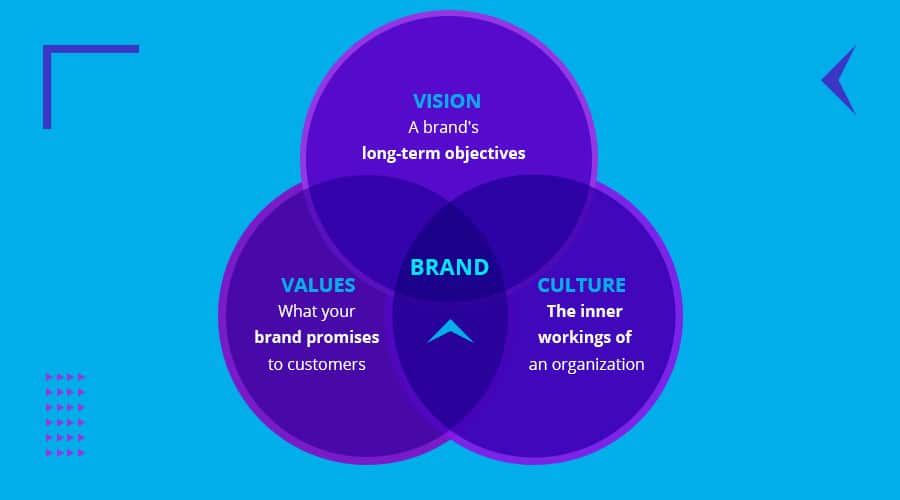
5. How To Employ Brand-Building Strategies On Digital Channels
Gaining new customers and improving customer retention are the benefits of data-based design and effective messaging.
By defining your brand voice and positioning your brand on the market, your business can streamline communication via all digital channels.
In today’s digital networking environment, your brand can’t afford to ignore major networks like TikTok, Facebook or Twitter. Controlling your B2B brand message and reputation is essential. Often, managing your brand, even in B2B, is done on social media.
Social media channels are an ideal solution for getting the word out about your products and services and generating brand awareness.
Let’s look at the numbers:
- Global brands spend 45-75% of their social media time on Facebook.
- There are 2.1 million negative social mentions about brands in the U.S. alone, every single day.
- 80% of consumers are more likely to evaluate solutions from the brands they follow on social channels.
By creating a strong brand presence on social media, you can reach a much broader audience that resonates with your brand voice, imagery and offering.

A brand strategy document should provide a set of visual guidelines that include:
- Brand colors
- Imagery
- Typography
- Logotypes
- Context in which to use these elements to ensure visual consistency across all channels
Some of the best practices of using a brand strategy to solidify your digital presence include:
- Following the visual guidelines to a “T”
- Perpetuating the brand voice using recommended syntax, buzzwords, taglines, branded hashtags etc.
In the context of social media and platforms like Twitter and Instagram, branded hashtags can provide a unique element to your company.
They can be something simple like a hashtag version of your company name, your tagline, or the name of one of your products or campaigns. Branded hashtags may have nothing to do with your brand name but instead with your brand identity.
Work With Digital Silk To Build Your Branding Strategy
At Digital Silk, we work with brands of all sizes and across industries to deliver custom branding strategies, including logo and brand design, messaging and implementation.
We choose and tailor the type of brand strategy to your unique goals, be they increasing visibility, improving recognition or growing loyalty.
As a basis for your strategy, we perform in-depth industry, competitor and audience research. We create user personas for your target market and determine the best approach to help you reach, engage and build long-lasting relationships with your target consumers.
From brand naming and storytelling to design and messaging, our experts will dive into every facet of your brand to help you create a unique and consistent brand image, and implement a winning strategy that resonates with consumers.
"*" indicates required fields













